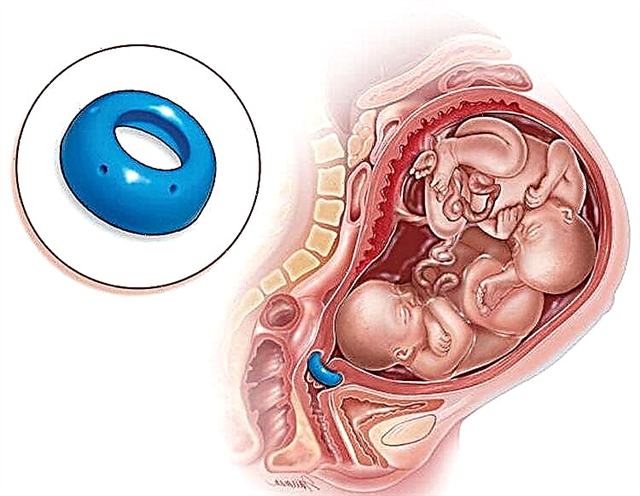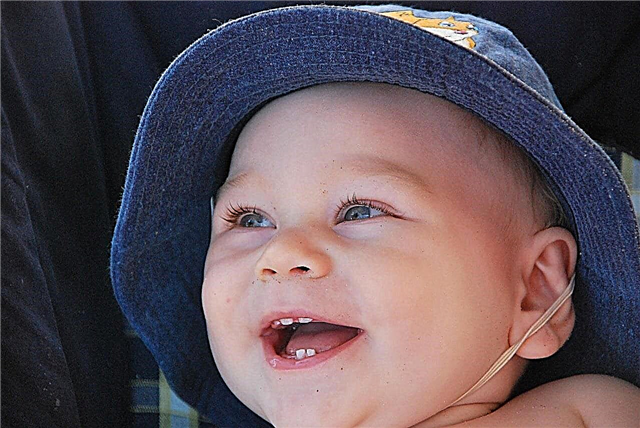
Pathological conditions in newborn babies always cause strong concern on the part of parents. Of particular importance is the presence of pathology in the brain. Cerebral edema is a fairly common situation that occurs in the smallest patients.

Causes
Cerebral edema is a clinical situation that is accompanied by the accumulation of fluid between different brain structures. This pathology is usually not an independent disease, but occurs in a variety of pathological conditions.

The development of cerebral edema in infants is caused by the influence of a wide variety of reasons:
- Birth trauma. Traumatic brain damage inflicted on a child during childbirth can contribute to the development of various intracerebral pathologies. One of these manifestations can be edema of the brain tissue. Postpartum clinical variants are found mainly with a complicated course of labor, as well as with an incorrectly chosen obstetric benefit.
- Intrauterine pathological conditions, leading to oxygen starvation of tissues (hypoxia). Violation of oxygen supply to the blood leads to various cellular metabolic disorders. Brain cells or neurons are very sensitive to oxygen saturation (filling the blood). A decrease in its intake into the child's body during intrauterine development contributes to the development of tissue hypoxia, which subsequently provokes signs of cerebral edema in the child. Most often, such clinical forms occur in premature babies.
- Development of postpartum asphyxia... This pathological condition occurs in a baby immediately after childbirth. It is characterized by the appearance of a pronounced violation of the respiratory function, and in severe cases, even a complete cessation of breathing.
- Too long and difficult labor. Labor disorders contribute to the progression of oxygen deprivation of brain cells in a child. Obstetricians-gynecologists conducting natural childbirth must monitor the condition of the baby throughout the period of expulsion of the fetus from the uterus. Prolonged standing of the child in the mother's birth canal can contribute to an increase in signs of hypoxia and lead to the development of signs of edema of the brain tissue after childbirth.

- Intrauterine infections. Many pathogenic viruses and bacteria easily penetrate the blood-placental barrier. Getting into the child's body through the nutrient blood vessels of the placenta, they are rapidly absorbed into the systemic children's bloodstream and spread to all internal organs. This infection leads to the fact that microbes can reach the brain and cause severe inflammation in it.
- Congenital anomalies development of the nervous system. Found in babies in the first months after birth. Pronounced anatomical and functional defects of the nervous system affect the functioning of the brain. The presence of such pathologies often leads to the development of brain tissue edema in babies.
- Hypernatremia. This pathological situation is associated with an increase in the level of sodium in the blood. Disorders of metabolic processes lead to increased edema, which can also appear in the brain tissue.
- Inflammatory brain diseases - meningitis and meningoencephalitis. In this case, edema of the brain tissue occurs as a result of a pronounced inflammatory process and is a complication of major diseases. To eliminate the excess accumulation of fluid in the meninges, it is initially required to treat the disease that caused this clinical condition.
- Purulent abscesses of the brain... They are rare in babies. They mainly arise as complications of various infectious diseases of the brain. They proceed with the appearance of the most unfavorable symptoms. Surgical treatment is used to eliminate them.
For what is cerebral edema and a more detailed description of all its possible causes, see the next video.
Symptoms
It is often difficult to suspect cerebral edema in a newborn baby at the initial stage. Clinical signs of this condition appear only with a pronounced course of the disease.
Many attentive parents will be able to suspect this pathology on their own, because many symptoms that appear in a child lead to a significant change in his usual behavior.

In the advanced stage of the disease, the child develops a headache. It can manifest itself in different ways: from mild malaise to significant pain syndrome, which brings the baby expressed anxiety. From the outside, a change in the baby's behavior is noticeable. He becomes more lethargic, restless, in some cases, on the contrary, - the child increases apathy and indifference to everything that happens.

In infants, appetite is disturbed, which is manifested, as a rule, by refusal to breastfeed. The baby does not attach well to the breast or suckles very slowly. Against the background of a pronounced headache, the baby's nausea is growing. With severe pain syndrome, vomiting even appears. Usually it is single, not plentiful in the amount of discharge. The child feels much better after vomiting.
Baby's mood also suffers. He becomes more whiny, capricious. Some children are more likely to ask for hands. As the symptoms increase, the child has serious trouble falling asleep. Usually it is difficult to put him down, but he may wake up several times in the middle of the night and cry. The duration of daytime sleep is also shortened.
Severe cerebral edema contributes to the appearance of systemic disorders from other internal organs. The baby's pulse is reduced, blood pressure can drop in some cases even to critical values.
The developed intracranial hypertension leads to compression of the nipples of the optic nerves, which is clinically manifested by visual impairment, frequent blinking and squinting.

Diagnostics
To establish the correct diagnosis, it is not always enough to conduct only a clinical examination. Edema of the brain, proceeding in a rather mild form, can be diagnosed only with the help of additional instrumental methods. The indications for the purpose of research are established by pediatric neurologists. These specialists, after examining the child, make up the diagnostic and treatment tactics in each specific case.

Ultrasound examination of the brain using the Doppler scan mode helps to identify various pathologies of the brain in babies, including the presence of stagnant fluid inside the brain formations. Using special echo signs, the doctor determines the severity of functional disorders. This study is completely safe, does not have radiation exposure and can be used even in the smallest patients.
Ultrasonography can also locate the maximum fluid accumulation, detect periventricular edema, and measure blood flow in the blood vessels feeding the brain.

Today, high-precision studies of the brain also include magnetic resonance imaging and computed tomography. These methods allow doctors to obtain an accurate description of the existing structural abnormalities and various pathological processes in the brain tissue. Additional diagnostic methods also include an examination of the fundus to identify indirect signs of intracranial hypertension, which is a frequent consequence of severe cerebral edema.

Effects
The prognosis is usually good. However, it is determined individually based on the general well-being of the baby. Children with persistent disturbances in the functioning of the nervous system and who have had severe infectious diseases of the brain are at risk of developing adverse complications. The consequences of the postponed pronounced edema of the brain tissue include:
- the occurrence of epileptic seizures;
- impaired memory and concentration of attention in older age;
- various speech and behavioral disorders;
- difficulties with socialization;
- vegetative-visceral syndrome.

Treatment
Therapy for cerebral edema includes the appointment of several groups of drugs. The main goal of treatment is to eliminate the cause that caused the accumulation of excess fluid in the brain structures. Symptomatic treatment is auxiliary in nature and is necessary to eliminate all adverse symptoms that have arisen during the course of the disease.

The following drugs are used to eliminate excess fluid from the brain:
- Diuretics or diuretics. They are basic drugs for the treatment of any pathological conditions associated with the formation of edema. Therapy with diuretic drugs has a significant therapeutic effect and leads to a fairly rapid improvement in well-being. To eliminate adverse symptoms in children's practice, the following are used: "Lasix", "Fonurit", "Novurit", 30% urea solution.
Treatment with these drugs is carried out strictly in a hospital setting.

- Dehydration therapy. Includes intravenous administration of various solutions. This type of treatment improves cellular metabolic processes, which contributes to better brain function and a decrease in fluid between brain formations. Children are injected with hypertensive solutions of 10% calcium chloride, 10% sodium chloride, 10% glucose solution and others.
- Decongestant therapy. Drugs that reduce puffiness include glycerin. Usually it is prescribed to babies orally along with various drinks: juices, fruit drinks, compotes. Average daily dosages are 0.5-2 g / kg of the child's body weight.
- Protein solutions. They help to improve metabolic processes in tissues, and also have a beneficial effect on the protein balance in the child's body. As such agents, a 20% albumin solution is usually used or plasma is injected.
- Glucocorticosteroid drugs. Necessary to eliminate signs of cerebral edema and improve well-being. Usually in children, up to 10 mg of hydrocortisone is used. The dosage is selected individually, taking into account the child's body weight.



